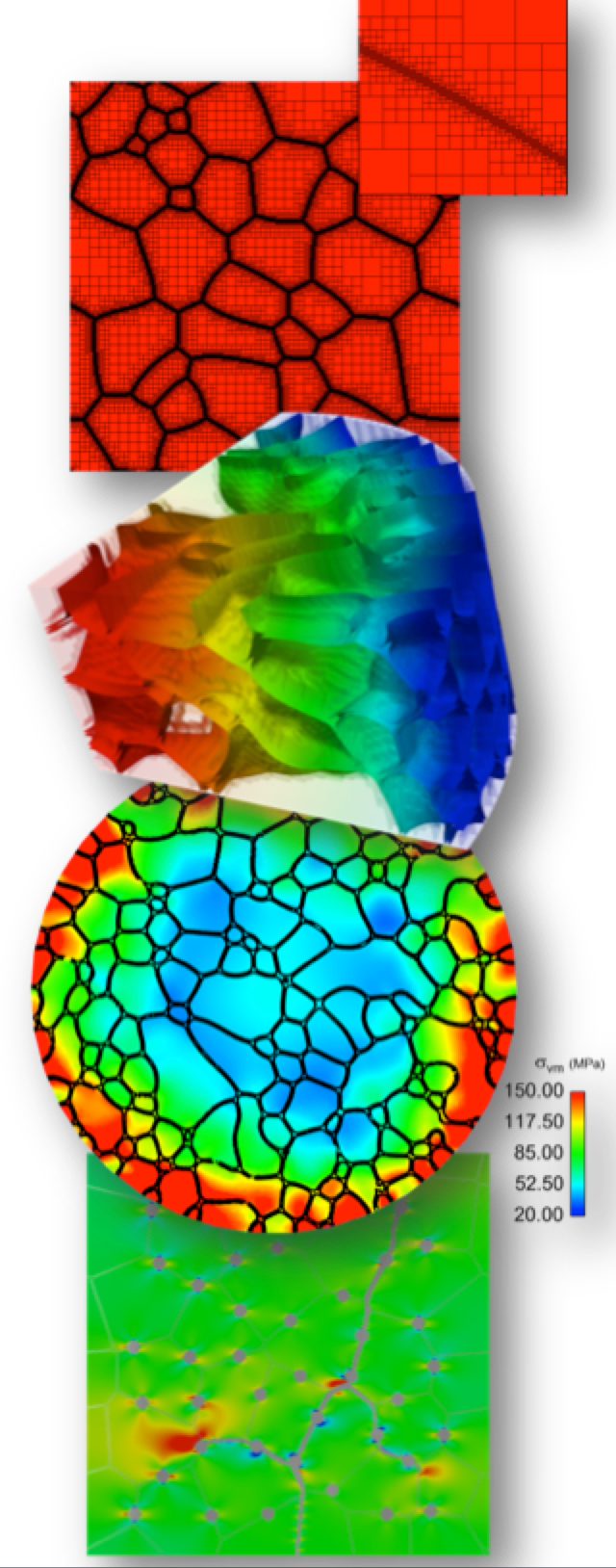Phase Field Module

Phase field results produced using the MOOSE Phase Field Module
The MOOSE phase field module is a library for simplifying the implementation of simulation tools that employ the phase field model. Multiphysics capability that includes mechanics and heat conduction can be obtained by employing the solid mechanics and heat transfer modules. More information about this module is found below:
Basic Phase Field Model Information
Basic Phase Field Equations: Basic information about the equations underlying the phase field module
Expression Builder: Using automatic differentiation of free energy material objects
Solving Phase Field Models: Basic info about solving phase field models
Function Material Kernels: Working with Function Materials that carry around their own derivatives
Function Materials: Creating material properties based on the value of an arbitrary function expression
Phase Field Model Units: Discussion of units in phase field models
Anisotropy: Support of anisotropic mobilities and interfacial energies
CALPHAD: Using thermodynamic databases to parameterize phase field models
Quantitative Two Phase Polynomial Free Energies: Simple two component models using polynomial free energies
Frequently Asked Questions: Frequently asked questions about the phase field modules
Multiple Phase Models
MOOSE provides capabilities that enable the easy development of multiphase field model. A free energy expression has to be provided for each individual phase. Different systems exist to combine those _phase free energies_ into a _global free energy_.
Two-phase models: Two phases, one phase order parameter
Kim-Kim-Suzuki Model: per-phase concentrations, two phases
Sublattice KKS model: per-phase concentrations, per-sublattice concentrations, multiple phases
Multiphase models: phases, phase order parameters
Grand Potential Multi-Phase, Multi-Order Parameter Model: solving a Legendre transform of the phase field equations, where the independent variable is the chemical potential

Atomistic input file generated using the SolutionRasterizer.
Multiphysics Coupling
Mechanics Coupling: Coupling phase field equations with mechanics
Phase field sub-systems
Nucleation
Discrete Nucleation: Insertion of nuclei according to a nucleation probability density field
Langevin Noise: Fluctuation based nucleation
Grain Growth
Grain Growth Model: Background on the phase field model implemented in MOOSE
Grain Tracker Algorithm: Tracking arbitrary features on an unstructured mesh over time
Grain Boundary Anisotropy: For systems with misorientation dependence of GB properties
Elastic Driving Force for Grain Growth: Coupling mechanics to influence grain growth
Linearized Interface Grain Growth Model: Grain growth model using linearized interface to reduce the required mesh size
Initial Conditions
Initial Conditions: Basic phase field initial conditions
Polycrystal Initial Conditions: Creating polycrystalline structures using a variety of methods
Image Reader: Reconstructing initial conditions from images (SEM, optical, etc.)
EBSD Reader: Reconstructing initial conditions from EBSD and EDS data
Tutorials
Fe-Cr Phase Decomposition: Illustrates using parsed function kernels to create a two phase decomposition simulation
Misc
Automatic Differentiation: Construct derivatives of a given expression in a symbolic way
Just in Time Compilation: Compilation of FunctionParser expressions